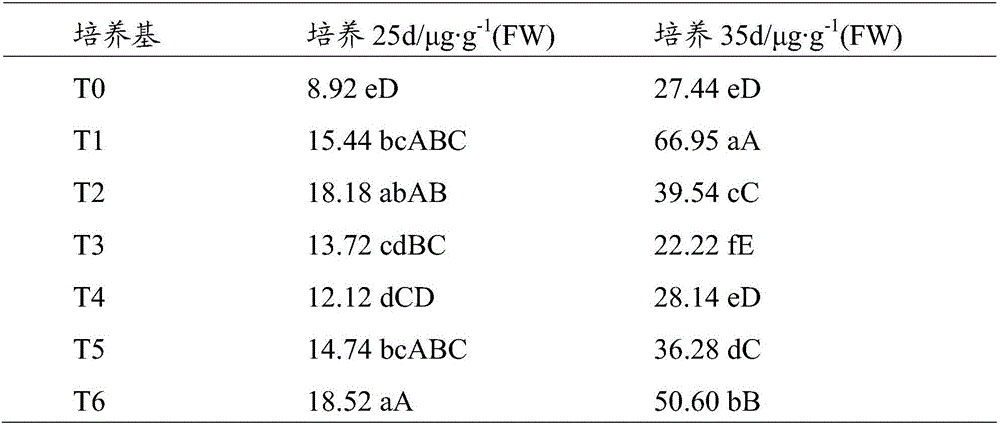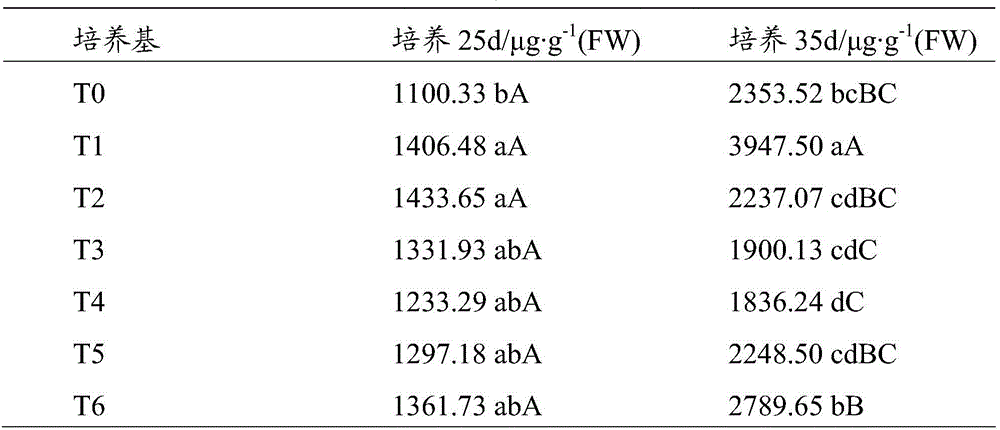Method for increasing anthocyanin content of vitis davidii cell cultures
A technology for cell culture and anthocyanin production, which is used in biochemical equipment and methods, plant cells, culture processes, etc.
- Summary
- Abstract
- Description
- Claims
- Application Information
AI Technical Summary
Problems solved by technology
Method used
Image
Examples
Embodiment 1
[0019] (1) Selection and pre-cultivation of grapevine cell lines
[0020] Select grapevine cell lines that show purple stably in the long-term subculture process, and pick cells from the surface layer of the cell mass with a part of the inner layer as the material for inoculation. In order to make the cells grow vigorously and tend to be synchronized, the cells need to be pre-cultured. The specific method is: subculture the cells of the previous generation for 20 days, and pick the cells on the surface of the cell mass with a part of the inner layer according to the above-mentioned method. As the material for inoculation, the cells were inoculated into TO medium (MS+2,4-D 1.0 mg / L) without KT and cultured for 20 days as the starting material for inoculation of high-content anthocyanin cells.
[0021] (2) Cultivation of high-content anthocyanin thorn grape cells
[0022] a. Culture medium
[0023] Six medium formulations with gradient concentration of KT were designed for the...
PUM
 Login to View More
Login to View More Abstract
Description
Claims
Application Information
 Login to View More
Login to View More - R&D
- Intellectual Property
- Life Sciences
- Materials
- Tech Scout
- Unparalleled Data Quality
- Higher Quality Content
- 60% Fewer Hallucinations
Browse by: Latest US Patents, China's latest patents, Technical Efficacy Thesaurus, Application Domain, Technology Topic, Popular Technical Reports.
© 2025 PatSnap. All rights reserved.Legal|Privacy policy|Modern Slavery Act Transparency Statement|Sitemap|About US| Contact US: help@patsnap.com


